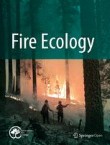Fire Ecology is the official journal of the Association for Fire Ecology.
The History and Evolution of Wildland Fire Use
Wildland fire use as a concept had its origin when humans first gained the ability to suppress fires. Some fires were suppressed and others were allowed to burn based on human values and objectives. Native Ame...
